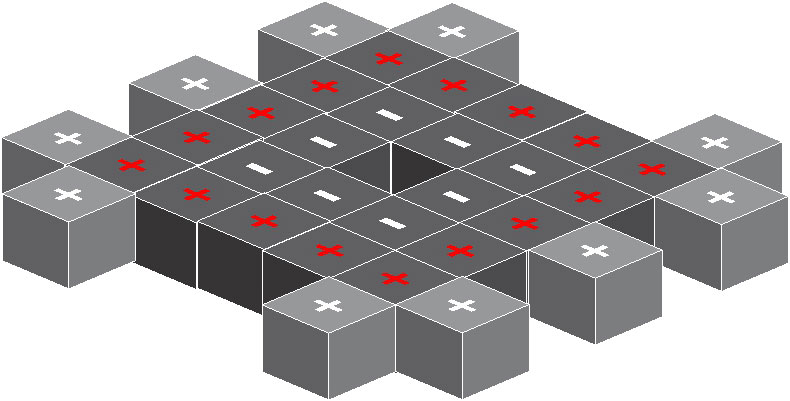Proton: 72
Neutron: 106
Spin: 0
Stable
Proton: 72
Neutron: 106
Spin:16


| Hf 178 Proton: 72 Neutron: 106 Spin: 0 Stable |
Hf 178m2 Proton: 72 Neutron: 106 Spin:16 |
 |
|
Hf 178

Hf 178m2

Hf178m2, the nuclide of 72 proton, 106 neutron, and nuclear spin of 16, is very unique by the combination of high nuclear spin of 16, very long half life of 31 years, and very high excitation energy 2.445Mev.
From the nuclear structure, the only difference between Hf178 and Hf178m2 is on the hollow layer. The spin of the 16 outermost neutrons are different, for Hf178 all 16 neutrons have negative spin, for Hf178m2 all 16 neutrons have positive spin. If we can reverse the 16 neutron on the hollow layer, it will release 2.445Me energy, with the form of gamma radiation, induced gamma emission.
Because the neutron is electrically neutral, most likely there is a specific magnetic resonance frequency and under such frequency, it will trigger all the 16 neutron reversion.
One research group at the University of Texas led by Carl Collins, artificially trigger the decay of the hafnium isomer Hf178m2 by bombarding it with low energy X-rays of a dental X ray machine, caused powerful gamma ray bursts.
J. Phys. IV France 127 (2005) 163-168
The use of selected monochromatic X-rays to induce a cascade of gamma transitions from the 31-year nuclear isomer to the 4 second isomeric state of Hf-178
N.C. Zoita, F. Davanloo, C.B. Collins, J.M. Pouvesle, S. Emura, I.I. Popescu, V.I. Kirischuk, N.V. Strilchuk, T. Uruga and Y. Yoda
Abstract
The Hf-178m2 nuclear spin isomer stores 2.45 MeV of energy for a half life of 31 years. Unperturbed, such nuclei radiate away the stored energy through the emission of gamma photons from electromagnetic (EM) transitions occurring within the nuclei. It has been shown that the irradiation of samples containing such nuclei with pulsed X-rays can accelerate the rate of the EM transitions by relaxing the selection rules upon changes of angular momenta. Till date, most work has been done with incident X-ray energies between 9 and 10 keV, and in such cases the acceleration of the rate of gamma emission is immediate. Reported here is a channel for deexcitation excited by more energetic X-rays that result in a cascade of gamma transitions that includes a 4 second statistical time lag. This more protracted release of the energy stored in samples of the Hf-178m2 nuclear isomers encourages researchers to consider the potential of mechanical and thermal applications.